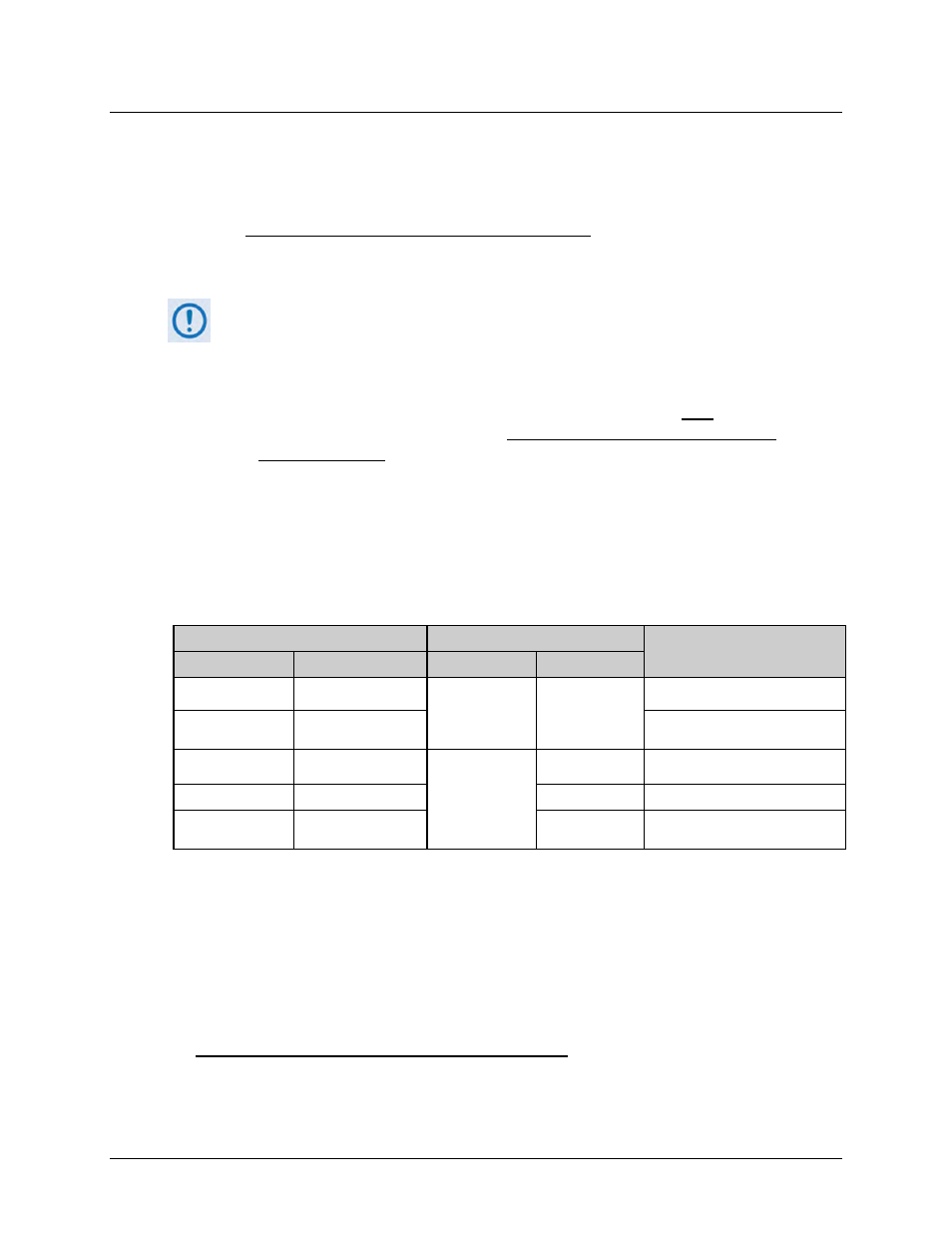8 cdm-710g/710gl modem connections, 1 rmi/tmi limitations and considerations, 2 interface combinations – Comtech EF Data CRS-300 User Manual
Page 136

CRS-300 1:10 Redundancy Switch
MN/CRS300.IOM
Cables and Connections
Revision 19
4–62
4.8 CDM-710G/710GL Modem Connections
If adding a modem to an operating 1:N system, care needs to be taken not to interfere with the
existing traffic. The cabling, power-up sequence and communication connections must be
correct to avoid contention in the system from the modem Tx carrier. This information is
detailed in Sect. 6.2.2.5 CONFIG: ACTIVE (Activate Modems).
4.8.1 RMI/TMI Limitations and Considerations
1)
Traffic modems with differing data types are not supported by the Redundant
Modem. For example, the Switch can not be populated with Traffic modems
with ASI and Traffic modes with HSSI.
2)
Depending on the traffic data type, the appropriate jumper settings are
provided on the Switch TMI to ensure proper operation for HSSI with CA/TA
signals using the CRS-336 TMI. See Chapter 5. MODEM, TMI,
AND
SWITCH
CONFIGURATION for this important configuration information.
4.8.2 Interface Combinations
The two plug-in interface module slots in the CDM-710G/710GL allow for many possible
interface card combinations. Table 4-2 details the interface card combinations that are
compatible with the Switch.
Table 4-2. CDM-710G/710GL Interface Card Combinations
CDM-710G/710GL Unit Configuration
1:N CRS-300 Configuration
Notes
Interface Slot 1
Interface Slot 2
TMI Card
RMI Card
G.703 (CDI-10-1)
None
CRS-325
CRS-306
-
G.703 (CDI-10-1)
GigE (CDI-70)
Can be used as
Redundant Unit
HSSI (CDI-60)
None
CRS-336
-
None
GigE (CDI-70)
CRS-306
-
HSSI (CDI-60)
GigE (CDI-70)
Can be used as
Redundant Unit
Notes:
1)
The Redundant Modem must have the same interface cards in each slot as any of the Traffic
Modems.
2)
The Traffic Modem must have either the same cards in each slot as any of the other Traffic
Modems have, or a blank panel installed.
3)
Interface Slots 1 and 2 are not active simultaneously.
